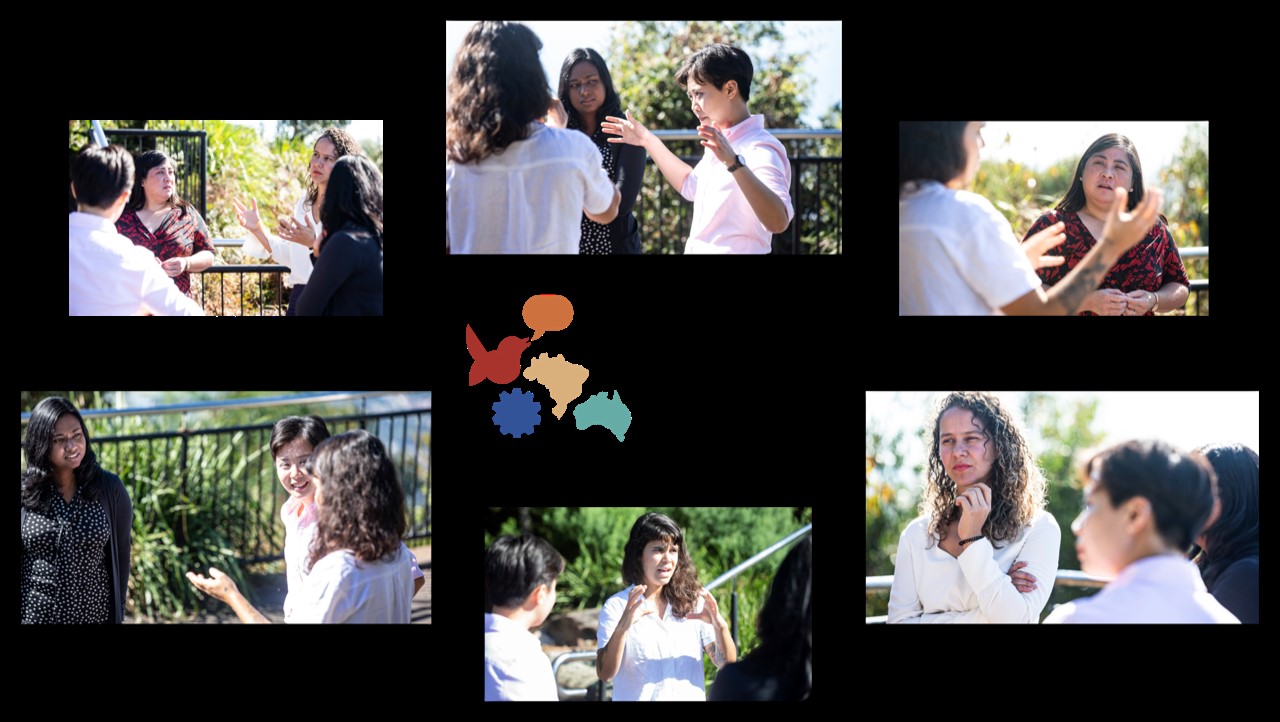Dr Maina Garcia, Dr Apsara Jayasekara, Dr Marcella Bernardo, Ms Grace Kennedy and Dr Emily Yap
https://www.linkedin.com/company/aubrwren/?viewAsMember=true

As a woman researcher in engineering, has it ever been suggested for you to add male names into interview articles, projects or grants to reach a larger audience and to have more credibility and increased success rate? Unsurprisingly, this scenario played out when the Women’s Research Engineers Network (WREN) was interviewed about a successful grant outcome – a clear example of unconscious gender bias and a discredit to women's work and achievements.
WREN started as a collaboration between early career researchers from the University of Wollongong (UOW) and professors from the University of São Paulo (USP, Brazil). For six months (April – September 2021), the project to launch the network has been sponsored by the Council on Australia Latin America Relations (COALAR), which is part of the Department of Foreign Affairs and Trade. The COALAR grant round in which WREN succeeded called for proposals aiming at COVID-19 economic recovery using digital technology platforms to strengthen links between Australia and Latin American countries.
Having women's voices heard in a male-dominated field is a challenge and the network members are very aware of that. The network’s name, WREN, is a reminder to women that female voices exist and are equally essential in ensuring that there are diverse perspectives in engineering research and problem solving. The name is inspired by female fairy-wrens. Until about six years ago it was presumed that male birds did most of the singing for the primary purpose of attracting mates, and it was also thought that female songbirds singing was an unusual and rare occurrence. For this reason, birdsong had been studied almost exclusively in male birds. However, further studies revealed that the female fairy-wrens of Australia sing just as much as the males, if not more frequently. What is even more interesting is that female songbirds sing to communicate with other females rather than to attract a mate. In this context, WREN aims to connect women researchers in engineering and is a platform where women can share knowledge, foster collaborations, and create new opportunities.
The network has launched its website in October which will provide members with a free and unique online platform to start collaborations. Accordingly, women research engineers all over the world will be able to discover other amazing women and start new conversations. The WREN seeks to not only join people together, but also to share knowledge around the experiences of women research engineers in Australia and Brazil via a series of online webinars revolving around the contrasting educational systems in Australia and Brazil, gender equity initiatives, and networking with fellow members to discuss collaborative and teaching approaches and opportunities (focused around addressing some of the United Nations Sustainable Development Goals (UN SDGs)). You can find recordings to the events via the WREN YouTube channel.
WREN’s event in June (Fostering Success for Women in Engineering) was especially important as it revealed the still-existing gap in engineering schools and faculties from UOW and USP. The heads of the three engineering schools of USP and the Associate Dean (Equity, Diversity, and Inclusion) of the Faculty of Engineering & Information Sciences at UOW were invited to present. Despite the nuanced differences between the structures of the bilateral counterparts, the numbers from both universities continue to show a clear gender gap in engineering departments. There is an average of 30% women representation among early career research fellows, but this falls to 9% among those reaching full professorship. The reasons for the drastic reduction of women in engineering departments is documented in different studies. For example, the Women in STEM Decadal Plan from the Australian Academy of Science listed the numerous barriers that women face during their careers, which hold them back and cause them to depart from engineering careers.
The light at the end of the tunnel comes when leaders of engineering departments are not only aware of gender gaps but are also willing to make a change. This was affirmed by one of the heads of engineering schools from USP who discussed the lack of gender equity initiatives at their school, but made a commitment to promote, engage and implement strategies for change.
WREN is committed to undertake research into addressing the UN SDGs. The network itself aims to address UN SDG 5 – Gender Equality and is aligned with SDG 17 – Partnerships for the Goals. Our August event (Research & Teaching Networking – Sparking Collaboration for a Sustainable World) saw almost 50 research engineers from around the world engaging in small group discussions around various SDGs: from sharing the work they are currently doing to address the goals, to challenges being faced, to exploring new collaborations in both research and teaching opportunities.
You can subscribe to our mailing list by dropping us an email at info@aubrwren.com and following us on LinkedIn, Twitter, Facebook or Instagram to stay up-to-date with our upcoming events and stories. Soon academics will be able to become WREN members via our website (to be launched in October 2021).
© 2025 Australian Academy of Science